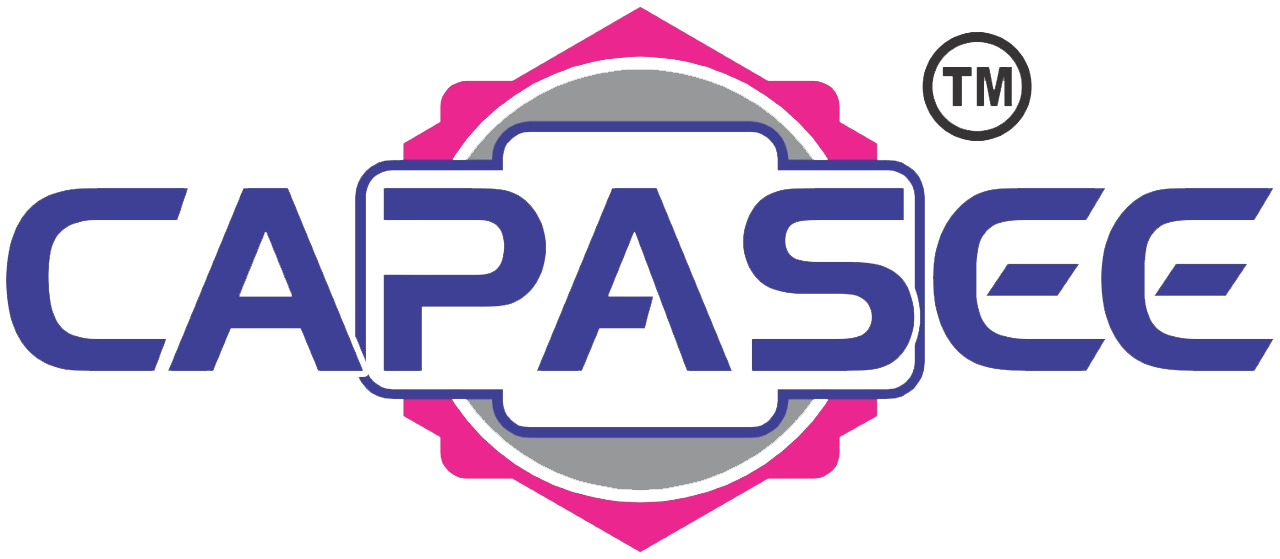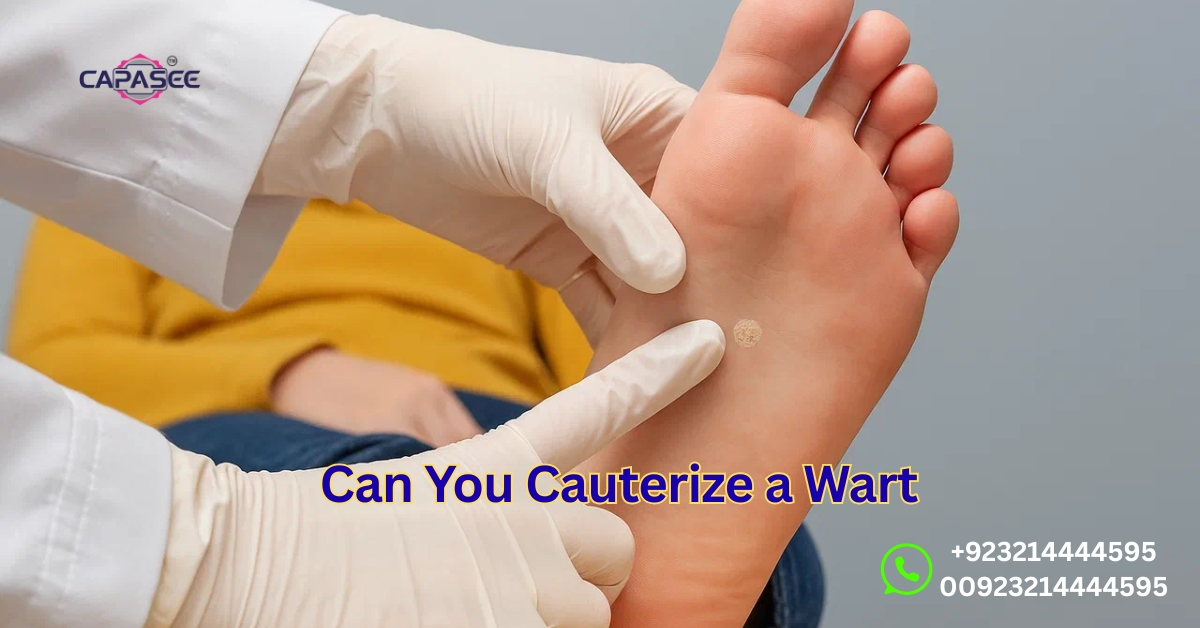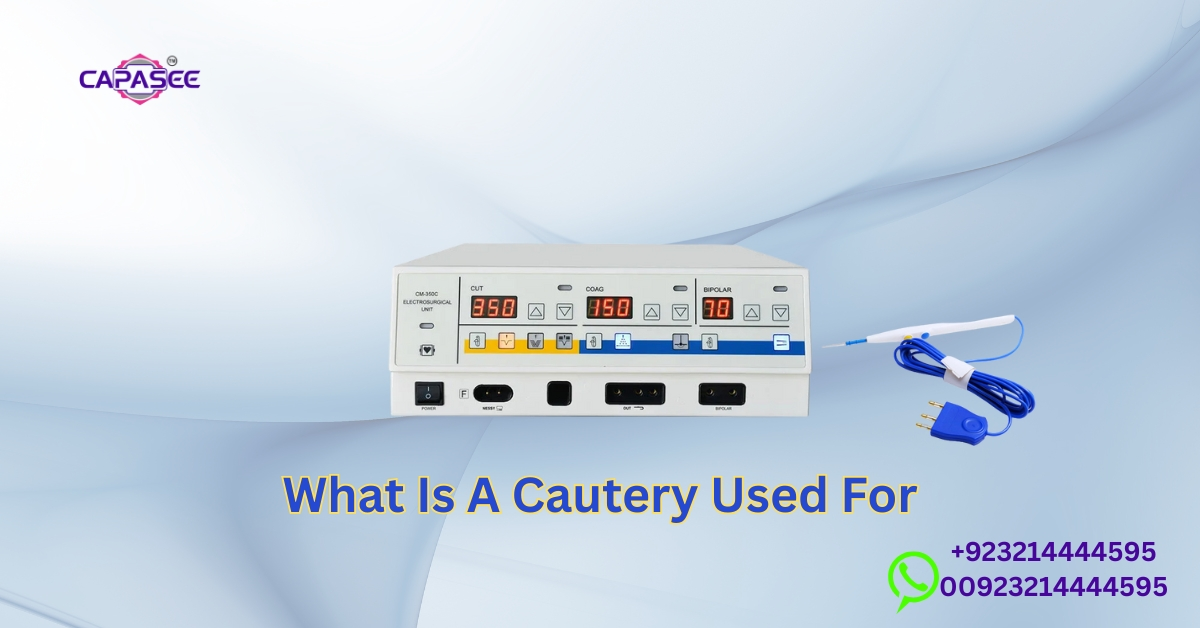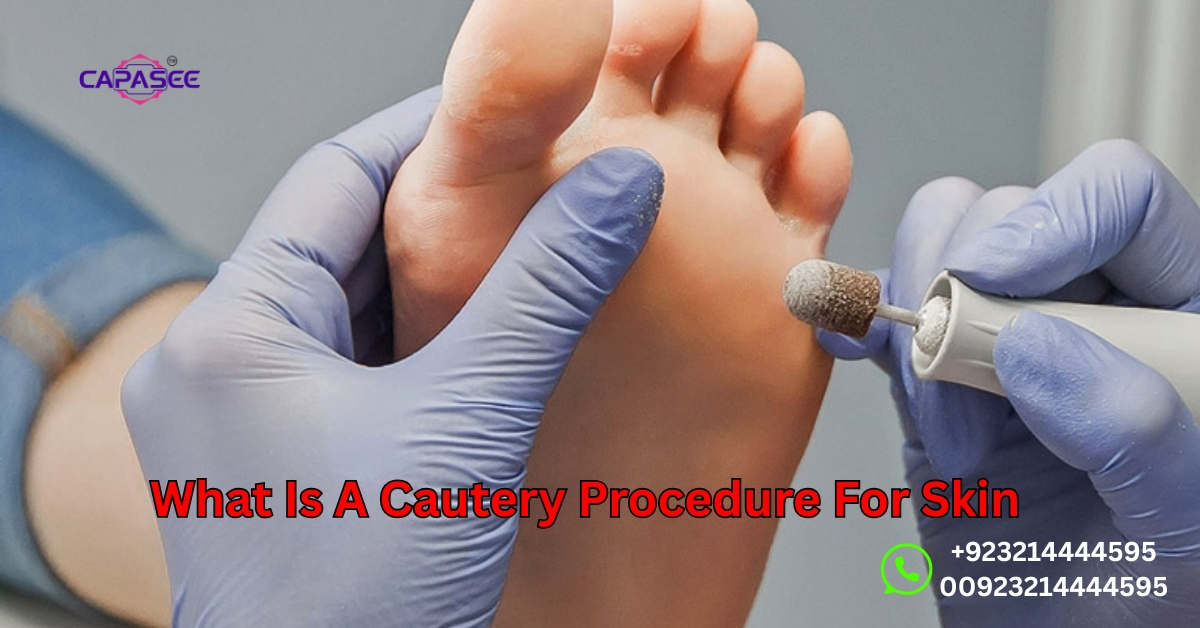It can be very annoying to deal with a stubborn wart. You have tried over the counter medicines, home remedies, and even putting a bandage over it, but nothing seems to work. You might be thinking of doing something more extreme, like cauterization, but you’re not sure if you can do it yourself. You’re not the only one who feels trapped and unsure.
We’ll talk about whether you should cauterize a wart, what it involves, and whether it’s safe to do at home in this blog post. You’ll get the answers you need, as well as useful advice on various ways to address your condition. We can help you whether you want to know more about cauterization or just want to know the best technique to get rid of your wart. Read on to find out more.
Can You Cauterize a Wart? Expert Insights from Capasee
To cauterize a wart is a way to get rid of wart tissue by using heat or chemicals. People typically use it to get rid of warts that won’t go away using conventional methods. When other solutions don’t work, experts say this is the best way to go, but it needs to be done by a specialist. Capasee Electro Medical Engineering stresses how important it is to pick the proper therapy based on where the wart is and how big it is.
For a lot of people, choosing to cauterize a wart is a better long term option than other typical treatments like cryotherapy or topical wart treatment. When done by professionals, it can successfully remove wart hyperkeratosis and stop it from growing again. It’s important to take care of the wound properly after the operation to make sure the skin recovers without any problems.
Wart Cauterization: How It Works and Who Can Benefit
When you cauterize a wart, you heat up the wart, which dries it out and makes it fall off. This process also goes after the capillaries that feed the wart, cutting off its blood supply. To cauterize a wart on the body is helpful, especially when other treatments don’t work. Cauterization is an easy way to get rid of warts that can be done in an outpatient setting.
Trichloroacetic acid (TCA) cauterization or cauterizing the edges of warts may work for people who have warts that won’t go away or keep coming back. But it’s important to go to a doctor to find out if it’s the best choice. Infection management is highly important while treating warts to stop the infection from spreading as the body heals.
Is Cauterizing Warts Safe? Risks, Side Effects, and Precautions Explained
When done by a competent practitioner, choosing to cauterize a wart is usually safe. The goal of the technique is to remove the wart tissue while causing as little harm as possible to the skin around it. There are still hazards, such as warts scabbing and healing, so it’s very important to follow the wound care guidelines after the treatment. Topical antibiotics can help keep warts from getting infected as they cure.
The treatment works, but patients need to be aware of probable adverse effects, such as cosmetic issues with wart removal and the possibility of scarring. To speed up recovery and get better results, people with warts should practice moist wound healing. Patients should also follow rigorous hemostasis during wart treatment to avoid bleeding too much or having other problems.
Wart Cauterization Procedures by Capasee Electro Medical Engineering
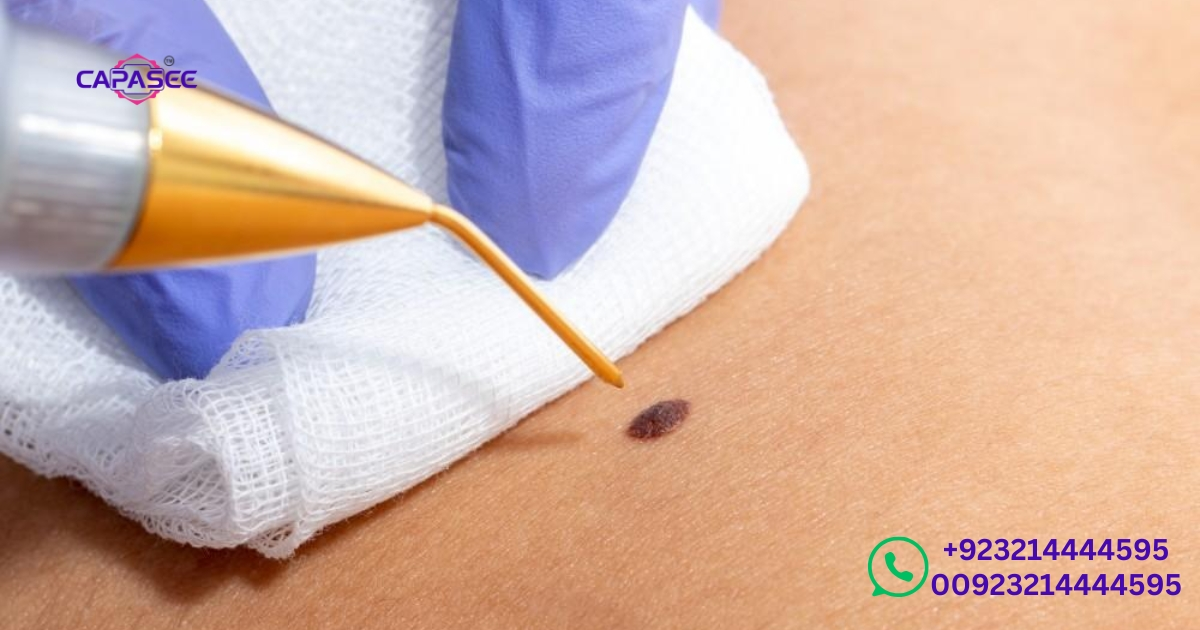
Warts are a common skin problem that can be annoying, but choosing to cauterize a wart can help. Cauterization is a rapid and effective way to get rid of warts by applying heat to them. Capasee Electro Medical Engineering is an expert in sophisticated techniques for wart cauterization, which guarantees high quality results for patients.
There are many ways to cauterize a wart on the body, such as electrocautery and chemical cauterization. Each approach uses heat or chemicals to destroy the wart tissue. It’s important to know the best technique to get rid of wart hyperkeratosis because not all warts react the same way. After the procedure, taking care of the wound is very important to make sure it heals properly and doesn’t get infected.
Electrocautery vs Chemical Cauterization: Choosing the Right Method for Your Wart
Electrocautery involves the application of an electric current in order to create heat and produce a kill on the tissue surrounding a wart. It is fast, less bloody, and this method assists in bleeding during the treatment of war. On the other hand, trichloroacetic acid cauterization (TCA) is a chemical treatment of smaller and superficial warts. The advantages and disadvantages of each technique are dependent on the size and location of the wart.
When deciding whether to cauterize a wart, you need to consider such factors as the nature of the wart, the sensitivity of your skin, and the presence or absence of wart feeding capillaries. Warts can be treated through chemical cauterization, which is economical, but larger or stubborn warts respond better to electrocautery. Both treatments have proven effective in preventing wart infections when administered under a clinical environment and this is what ensures that they are safe and most effective.
Wart Removal by Cauterization: What to Expect at Capasee Clinic
At Capasee Clinic, the cauterization treatment to cauterize a wart is done with care and precision. First, the region around the wart is cleaned and numbed so that the treatment is as comfortable as possible. After that, the doctor either uses an electrocautery instrument or puts TCA on the wart. The wart tissue will be destroyed by the heat or a chemical.
After that, the region that was treated will be wrapped, and the warts should cure in a moist environment. You will also get instructions on how to use topical antibiotics for warts and how to take care of the wound to avoid problems. You can go home the same day after the surgery because it is an outpatient wart therapy. Taking care of the wart properly will help it recover with less scarring and make sure it doesn’t come back.
Table: Comparison of Wart Cauterization Methods
| Method | Description | Ideal for | Benefits |
| Electrocautery | Electric current heats tissue to destroy the wart | Larger warts, recalcitrant warts | Quick, minimal bleeding, effective in hemostasis |
| Trichloroacetic Acid (TCA) | Chemical acid applied to wart | Small, superficial warts | Low cost treatment, effective for wart scabbing and healing |
| Cryotherapy | Liquid nitrogen freezes wart | Warts on delicate areas | Alternative to cauterization, effective for viral warts |
Both the safety of cauterization and the coagulation of wart capillaries are important for getting good results from treatment. Always talk to a doctor to find out what the best treatment is for you.
You May Also Read This Blog: Does Cautery Leave Scars
Aftercare and Alternatives: Maximizing Effectiveness in Wart Treatment at Capasee
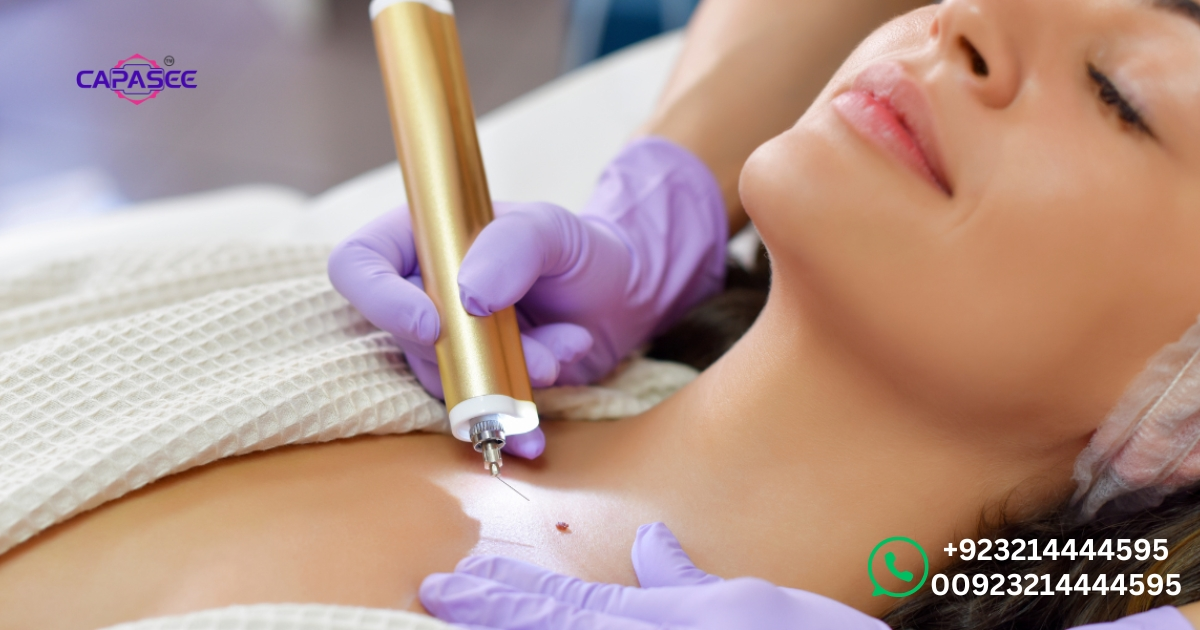
The most important thing you should do after you have cauterized a wart is proper aftercare. You must be patient and pay attention when healing so that you do not get infections. When you have warts, you can cauterize and wet the wound faster. Topical antibiotics on cauterized warts also aid in preventing the occurrence of any issues. The place should stay clean and dry and must not be scratched at the scabs. Infection control in the process of cauterization therapy of war is highly valued to prevent future complications.
However, by choosing the right aftercare products and adhering to an action plan of healing, you will get well more quickly and get fewer spots. When receiving treatment to cauterize a wart as an inpatient, you might have to visit the clinic again to receive follow up care. Also, you need to know that the cauterized warts on your body may take time to heal completely. This involves scabbing and curing. The ultimate rewards will be patience and steadfastness in care.
Wart Cauterization Healing Time and Pain Management Tips
The duration of healing of a wart that has been cauterized will be subject to the size of the wart and the procedure applied. The average time of recovery is 1 to 3 weeks in most cases. Professional clinics ensure that the procedure to cauterize a wart is safe and this reduces the possibility of infection or other complications. Wart pain treatment protocols, such as over the counter pain relievers, are useful in case of pain. A bandage on the area will relax the area and accelerate the healing process.
In addition, there should also be no additional stress on the area that was treated, which will contribute to the proper recovery of the wart. In case the area appears swollen, it can also be raised up in order to relieve any pain. It is quite important to take care of your wound as recommended by your doctor after you cauterize a wart to ensure that you recover within a short period.
Costs, Effectiveness, and Home Remedies Compared to Professional Wart Cauterization
Home remedies do sometimes help; however, the professional treatment of cauterizing a wart is one of the best methods of disposing of the warts. The wart eradication treatments by TCA (trichloroacetic acid) and others are very effective in Capasee. At home remedies may be cheaper, but they are not usually as effective and take longer to work. You can afford to spend the money on professional treatment if you want quicker results and to have less scarring.
The cost of cauterizing the wart on the body may vary depending on the size and location of the wart. However, in the long run, when you consider the cost of the home therapies that are offered, professional care is cheaper. A wart that is cauterized is sure to be gone and will not come back.
Read More: Our Products
Exploring Alternative Treatments to Wart Cauterization: What You Should Know
There are other ways to treat warts besides the option to cauterize a wart, including cryotherapy and chemical therapies. There are other ways to treat warts that don’t entail freezing them, and there are also ways to make warts smaller before removing them. These treatments might work on some types of warts, although they might take longer than the cauterization technique. Professional wart cauterization is the best and fastest way to get rid of obstinate warts, especially those that keep coming back.
You should think about the pros and cons of each treatment. Talking to a dermatologist will help you determine the best strategy for your specific case, which will lead to the best results. Professional therapy is the safest and most successful way to get rid of wart capillary coagulation or stop wart feeding capillaries from forming.
Frequently Asked Questions
Can I cauterize a wart?
Yes, cauterizing a wart is a good way to get rid of it because it uses heat to kill the tissue.
Is it safe to burn a wart off?
Yes, it is safe to burn a wart off if a qualified professional uses the right methods.
How long do cauterized warts last?
Cauterized warts normally don’t come back, but it’s important to get follow up care to make sure they heal properly.
How to treat warts while pregnant?
Before using any wart treatment while pregnant, talk to your doctor to make sure it’s safe.
Are all warts caused by HPV?
Yes, the human papillomavirus (HPV) is the main cause of most warts; however, some forms are not hazardous.
Final Thoughts
A very effective means of removing the warts that do not respond to traditional methods is to cauterize a wart. It destroys the tissue of the wart by heating it and the effects are long lasting. Professional assistance is, however, important to prevent issues and ensure the effectiveness of the treatment process. When you pay proper attention to it after you cauterize a wart, it may become an enduring treatment that will enable you to restore your skin to its usual smoothness and wart lessness. To achieve the most favorable outcomes, it is always better to discuss this strategy with a doctor.
